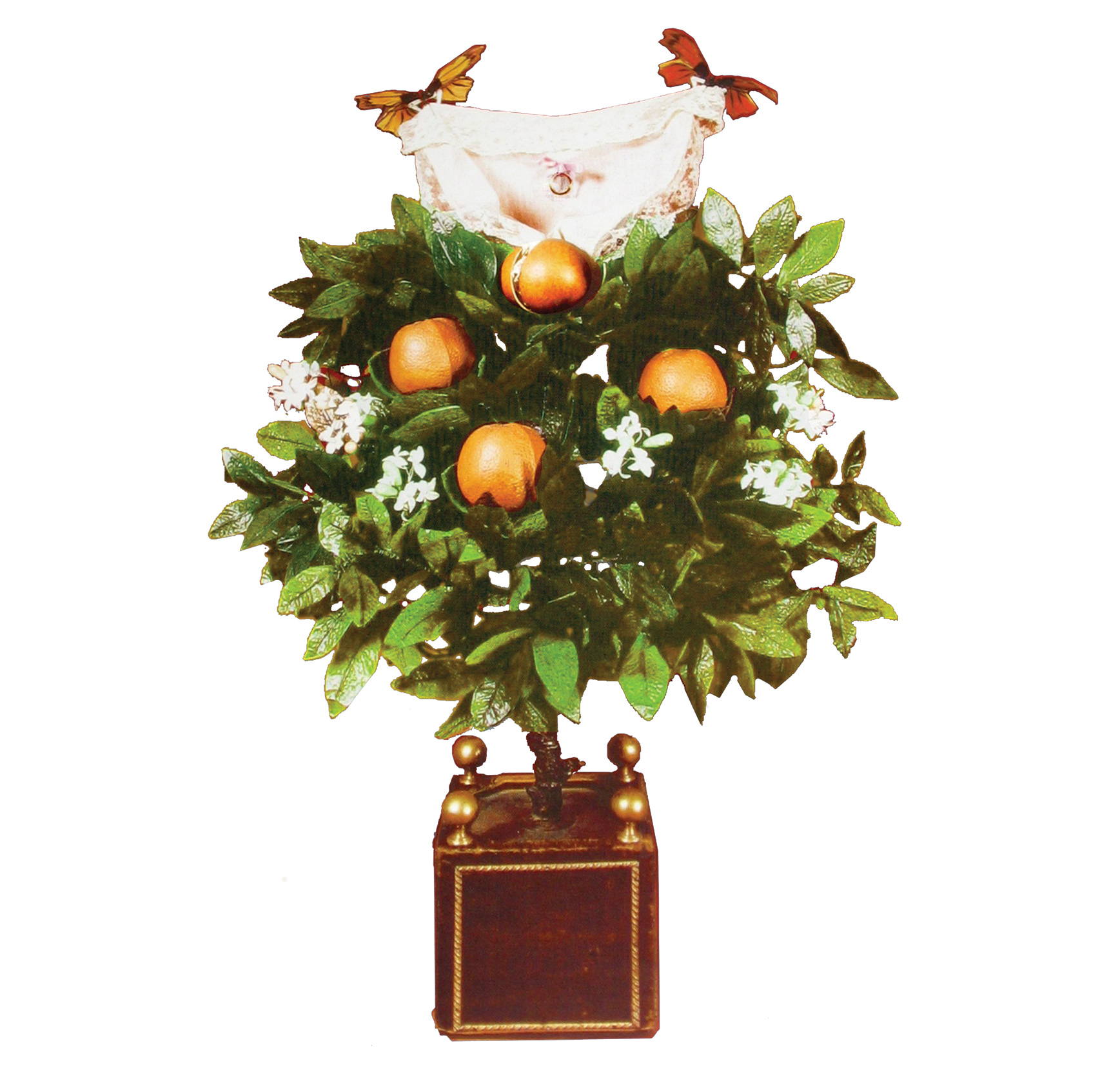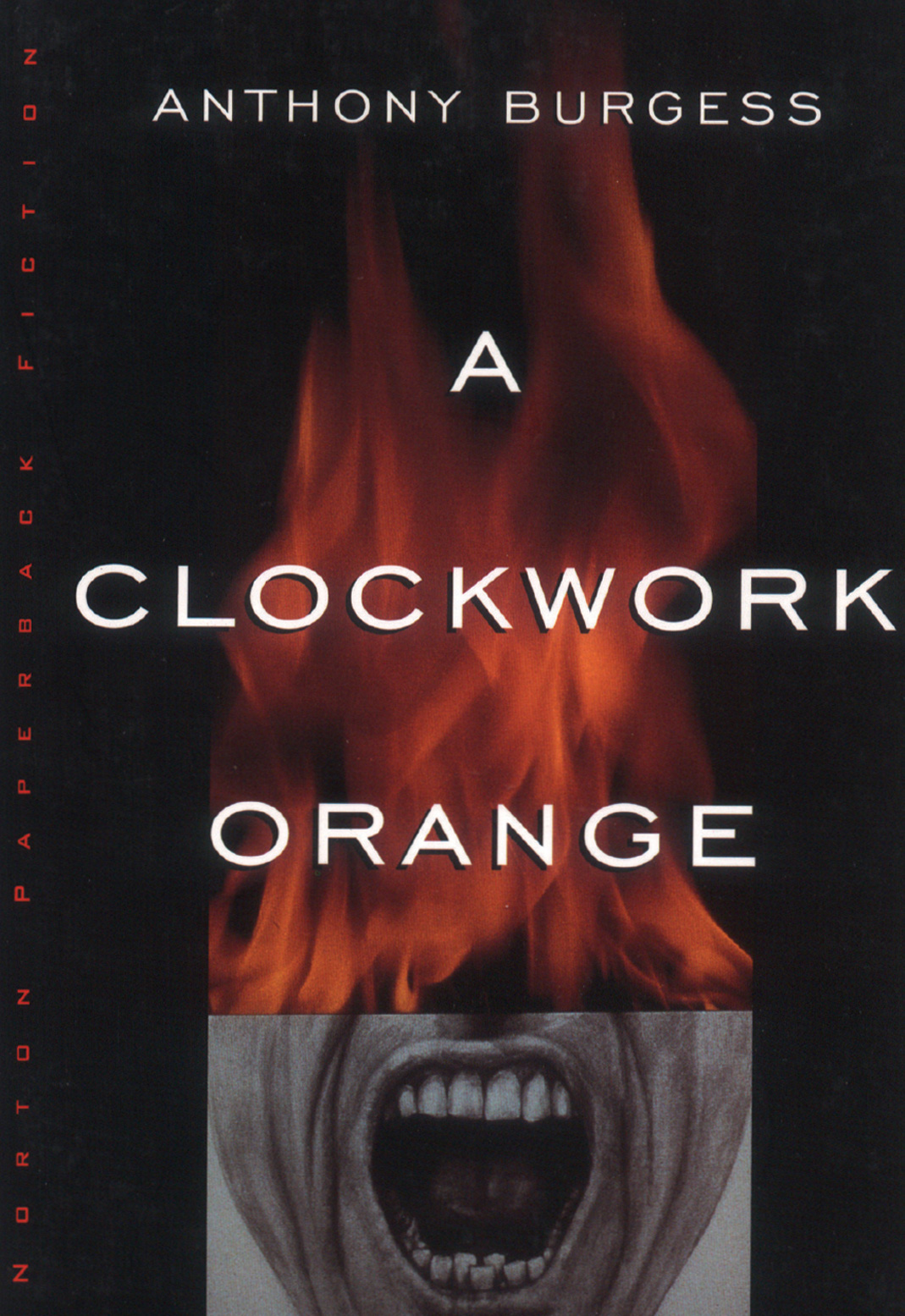Code Orange
Robert-Houdin and his fantastic magic tree
Maggie Cutler
The first person to make a mechanical orange was Jean Eugene Robert-Houdin (1805–1871). The illustrious French magician discovered his calling the way I found my way into this issue of Cabinet—by chance. As he wrote in his Confessions, while still a young clockmaker, he ordered two books on horology from a bookseller who handed him two volumes on magic by mistake. Reading these accidentally acquired manuals, Robert-Houdin foresaw making his mark as a prestidigitator.
Years later, he did. He was the first illusionist to perform on the legitimate stage in evening dress and is often credited with being the first to use modern science in constructing tricks. Robert-Houdin is often called “The Father of Modern Magic,” and his stage name, a magical father in its own right, sired Houdini’s.
It was in the mid-1800s that Robert-Houdin devised “The Fantastic Orange Tree Trick”—an elaborate piece of stagecraft so well-respected in the trade that as recently as 2002 actor-magician-scholar Ricky Jay recreated it to close his Broadway show, On the Stem. The original Fantastic Orange tree apparatus (next page) is in the collection of Christian Fechner, the historian of classical magic. In Fechner’s recently published collector’s edition of The Magic of Robert-Houdin, An Artist’s Life, he describes in detail how the trick was performed by one of the illusionist’s officially sanctioned successors in the late 1800s. Thanks to Todd Karr of miraclefactory.org who has generously shared his translation of the appropriate passage, here is its gist:
As the magician, you begin by getting a handkerchief from one woman in the audience and a ring from another. Neither are accomplices. You then tie the ring to the handkerchief with a ribbon (to create an ensemble too unique to swap for a look-alike) and you promise to make the handkerchief-ring dematerialize, and then reappear inside an orange. Next, you make an egg vanish into a lemon and that lemon into an orange. But now, you announce, there is no room left in the orange for the handkerchief, so you will have to find some other way to make good on your promise.
Rubbing the egg-lemon-orange in your hands, you reduce it gradually into a powder, which you sprinkle into a liqueur. After your assistant places a potted orange tree on the table beside you, you pour the liqueur into a goblet, light it beneath the orange tree to represent “the heat and light of the sun,” and wave your wand, commanding the tree first to flower—which it does—and then to fruit.
“You may think these are mechanical oranges,” you say. “Stand corrected, since I will now pick them before your eyes.”
After you do, you distribute them to people in the audience to eat.
When only one orange remains, you remind everyone of your promise, saying: “I will take the handkerchief with both my hands and from here I will send it into the orange; I will then tell this orange, ‘Open!’”
Fantastically, the orange opens at your command. Two butterflies fly into the air, the original handkerchief and ring between them, whereupon you ask, “Can you see your handkerchief, Madame?” Finally, you return the ring and handkerchief to their respective owners, who confirm your genius by verifying their authenticity.
Robert-Houdin, Fechner explains, originally constructed the final handkerchief-bearing orange in five segments with four hinges, and it “grew” much the same way as the flowers and real oranges did—by being thrust (via cables and levers manipulated by an offstage assistant) from behind various small screens camouflaged with leaves. Still other levers opened the orange and released its mechanical butterflies.
Because the whole mad contraption was the work of a clockmaker and featured an engineered orange, it occurred to me that the penultimate orange on Robert-Houdin’s tree may have inspired the person who—back in the days when queer meant “odd”—came up with the phrase, “queer as a clockwork orange.” It’s this bit of folk wit, and not Robert-Houdin’s trick, that Anthony Burgess, in various introductions to his dystopian classic, A Clockwork Orange, consistently cites as the origin of his novel’s title. “Clockwork oranges don’t exist,” he declares, “except in the speech of old Londoners.”
But clockwork oranges did exist, and old Londoners were far more likely than Burgess to be aware of them. It’s known that the Fantastic Orange Tree Trick was performed and reviewed in late-nineteenth-century London and quite likely later as well. If the origin of “queer as a clockwork orange” coincided with this London engagement, Burgess could have first heard the phrase a mere fifty years later. So it is plausible, however hard to prove, that an ex-clockmaker’s fake fruit inspired some Briton’s witty metaphor about the incongruity of clocks and oranges—giving Burgess his title. Then again, similarities between the tangible clockwork orange and the verbal one could be a fluke, a chance congruence of ingenious minds. Either way, the trick and the metaphor represent two very different takes on the impact of humans on nature.
There is no record of Robert-Houdin or his audiences perceiving anything “queer” about his mechanical orange. Robert-Houdin most likely featured the orange in his trick because it was naturally segmented and easy to see from the back row. Possibly he knew that some varieties of oranges, unlike most plants, fruit and flower at the same time. The potted orange tree was also in keeping with the high-toned aura of respectability that Robert-Houdin assiduously cultivated. In his delightful book Oranges (1966), John McPhee reports that potted orange trees are a relic of the reign of King Charles VIII of France, who, at the end of the fifteenth century, “in an expedition said to mark the dividing point between medieval and modern history,” marched off to conquer Italy. Instead, says McPhee, Italian culture conquered Charles and, “when he returned to France, every other man in his retinue was an Italian gardener, an Italian artist or an Italian architect.”


Charles’s gardeners cultivated Mediterranean oranges at the king’s chillier château at Amboise by planting them in pots under mica shelters, and moving them to catch the sun. The orangerie, ancestor of the greenhouse, became a staple of royal architecture. Oranges gradually trickled down from the aristocracy to the merchant elite until, in the mid-1800s when Robert-Houdin began performing, they entered middle-class homes. So Robert-Houdin’s potted orange tree represented a triumph of horticultural ingenuity and bourgeois cultivation. It was a plant that could quite plausibly cough up a handkerchief and a lady’s ring without suffering an identity crisis.
The opposite is true of the English slangster’s simile. Whether or not the vivid expression was inspired by a magician’s automaton, a metaphorical history of the clockwork orange reveals that somehow the notion of a man-made fruit evolved from a playful nineteenth-century conceit into the epitome of edgy strangeness.
For Burgess in the mid-twentieth century, the idea of authorities reaching into the guts of something natural and manipulating it to suit themselves was the opposite of a parlor trick; it was a kind of ultraviolence. In Malaya, where Burgess had spent time in civil service, he wrote that the word “orang” meant “human being.” To him, the clockwork orange represented “the application of a mechanistic morality to a living organism oozing with juice and sweetness.” It was a symbol of Pavlovian humanity, and seemed to him an abominable contradiction in terms.
Today, a “clockwork orange” is no longer a true oxymoron. Genetics and microbiology show us that living things are composed of numerous molecular timers and gizmos that human beings can tweak. Oranges in particular, because they reproduce by apomixis rather than through fertilization, are relatively easy to engineer genetically into little drug and pesticide factories—cornucopias of nourishment and pharmaceuticals for us all—as well as cash cows for the multi-billion-dollar, multinational orange-growing industry. Still, as we know by now, a genetically modified orange is never quite as predictable as clockwork. A part of nature, it is subject to unpredictable environmental interactions, some of which might, by chance, go quite badly. So, when contemplating the future of the orange, Robert-Houdin’s evocation of wonder and Burgess’s dread both seem fully apt, leaving most of us with that stroboscopic ambivalence best described in the phrase of the anonymous poet, as “queer as a clockwork orange.”
Maggie Cutler, the winner of Cabinet’s “editor-by-chance” lottery in issue 19, is a writer and editor at the satirical website www.shacklereport.com [link defunct—Eds.]. Her articles appear in a wide assortment of publications.